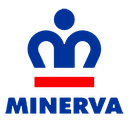Executive Secretary

XI Conferencia Científica Internacional de Ingeniería Mecánica
COMEC 2023
XVIII Simposio de Soldadura y Materiales
Resumen
• Objetivo: Caracterizar, desde el punto de vista microestructural, un acero dúplex para su empleo en instalaciones fabricadas por soldadura, utilizando el procesamiento digital de imágenes.
• Metodología: Con el uso del procesamiento digital de imágenes es determinada la fracción de austenita y ferrita en acero dúplex. Es también caracterizada la ZAC de soldaduras GMAW realizadas con dos energías de entrada. Es cuantificada la fracción de ferrita y de las diferentes morfologías de austenita; así como el tamaño de grano y el ancho de la ZAC.
• Resultados y discusión: El procesamiento digital de imágenes posibilita cuantificar las diferentes morfologías de austenita. Se establece el efecto del calor de entrada, sobre la fracción de ferrita y de las diferentes morfologías de austenita y sobre el ancho y el tamaño de grano en la ZAC.
• Conclusiones: Se ratifica la validez del procesamiento digital de imágenes para la caracterización microestructural de aceros dúplex. Para la energía de 1,5 kJ la mayor parte de la austenita es de contorno de grano, le sigue la de Witmastatten y por último la intragranular. Para la energía de 2,5 kJ, disminuye significativamente la de contorno de grano, crece la Witmastatten y la intragranular. Se recomienda el empleo de la menor energía de entrada posible.
Abstract
• Problematic: During the welding of duplex steels, the thermal cycle in the heat affected zone (HAZ) altered the percentage of austenite, the grain size and the width of this zone. These microstructural aspects affect their performance in service.
• Objective: To characterize, from the microstructural point of view, a duplex steel for its use in facilities manufactured by welding, using digital image processing.
• Methodology: With the use of digital image processing, the fraction of austenite and ferrite in duplex steel was determined. The HAZ of GMAW welds carried out with two heat input was also characterized. The ferrite and the different morphologies of austenite fraction were quantified; as well as the grain size and the width of the HAZ were measured.
• Results and Discussion: Digital image processing makes it possible to quantify the different austenite morphologies. The effect of heat input on the ferrite and the different austenite morphologies fractions and on the width of the HAZ and grain size were established.
• Conclusions: The validity of digital image processing for the microstructural characterization of duplex steels is ratified. For the energy of 1.5 kJ most of the austenite is grain boundary, followed by Witmastatten and lastly intragranular. For the energy of 2.5 kJ, the grain boundary decreases significantly, the Witmastatten and the intragranular increase. It is recommended to use the lowest possible heat input.
Sobre el ponente

Dr. Eulogio Amado Cruz Crespo

Profesor en la UCLV
Discussion



